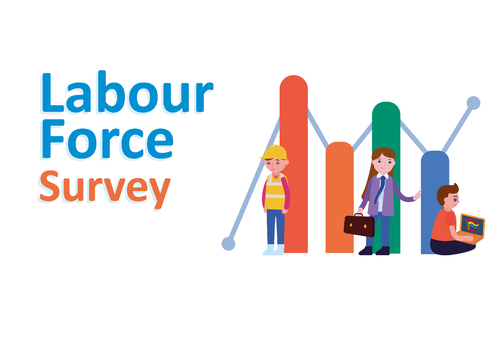On the 21st August 2025, the Central Statistics Office (CSO) published the Labour Force Survey (LFS) for Quarter 2 2025, which covers the months of April to June.
- Total unemployment and long-term unemployment have marginally increased over the year.
- Total employment figures have increased, however, the number of women in full-time employment has decreased, while their participation in part-time employment has increased. Women are also over-represented in part-time underemployment figures.
- Youth unemployment continues to increase; young people account for 1 in 3 people in unemployment in Ireland.
Unemployment
In this quarter 140,800 people were unemployed, an increase of 9,600 people from the same quarter in 2024. The unemployment rate in Q2 2025 was 4.8%, an increase of 0.2 percentage points (ppts) over the year.
The unemployment rate for women was 4.5%, the same rate in Q2 2024. The unemployment rate for men was 5.0%, 0.4 ppt higher than Quarter 2 2024. Women accounted for 44.5% of the unemployed in Q2 2025, 2.3 percentage points lower than in Quarter 2 2024.
The unemployment rate for young people aged 15-24 years was 13.2%, an increase of 1.2 percentage points over the year. The unemployment rate for people aged 25-74 years olds was 3.6%, an increase of 0.1 ppts from Quarter 2 2024. Young people accounted for 35.2% of the unemployed in Quarter 2 2025, an increase of 1.7 ppts.
The number of people deemed long-term unemployed (over one year) increased by 1.9 percentage points over the year to 32,665 people. Women accounted for 40.6% of the long-term unemployed in Q2 2025, an increase of 2.6 ppts compared to Quarter 2 2024.
The Potential Additional Labour Force
The Potential Additional Labour Force (PALF) captures people who may not fit into the official definition of unemployment, whereby people have to be actively seeking work for the previous four weeks and available to take up work in the coming two weeks of the survey. In Q2 2025, PALF stood at 118,000, the same number of people in Q2 2024. The CSO noted that “Of those who stated that they wanted to work but were not seeking work or available for work in Q2 2025, 32.1% said this was due to education or training. This compares to 35.2% a year earlier and 28.7% in Q2 2023. Persons not seeking work due to own illness or disability accounted for 27.3% of the total in Q2 2025, down from 28.6% in Q2 2024 and 32.6% in Q2 2023.”
Employment Figures
Over the year the number of people employed in Ireland increased by 2.3% to 2,818,100 people. Full-time employment increased by 2.5% to 2,236,100 people, accounting for 79.3% of those in employment. The employment rate was 74.7%, an increase of 0.3 percentage point over the year. Women accounted for 41.5% of people in full-time employment in Quarter 1 2025, 0.7 percentage points lower than Q2 in 2024.
Over the year part-time employment increased by 10,400 people to 582,000: within this figure, part-time underemployment increased by 8.3% to 153,600 people. In Q2 2025 women accounted for 68.5% of people in part-time employment, and 61.2% of people who were underemployed.
The Labour Force
Over the year the Labour Force rose by 2.5% to 2,958,900 people. The labour force consists of people who are in employment plus people who are unemployed. Two factors influence changes in the Labour Force: the demographic effect (+49,200) and the participatory effect (+24,300).
The participation rate in Q2 2025 was 66.4%, up 0.4 percentage points on Q2 2024. The participation rate measures the share of the total population aged 15 years and over who are in the labour force. Over the year the participation rate increased by 0.6 ppts to 71.4% for men and for women it remained stable at 61.0%.
